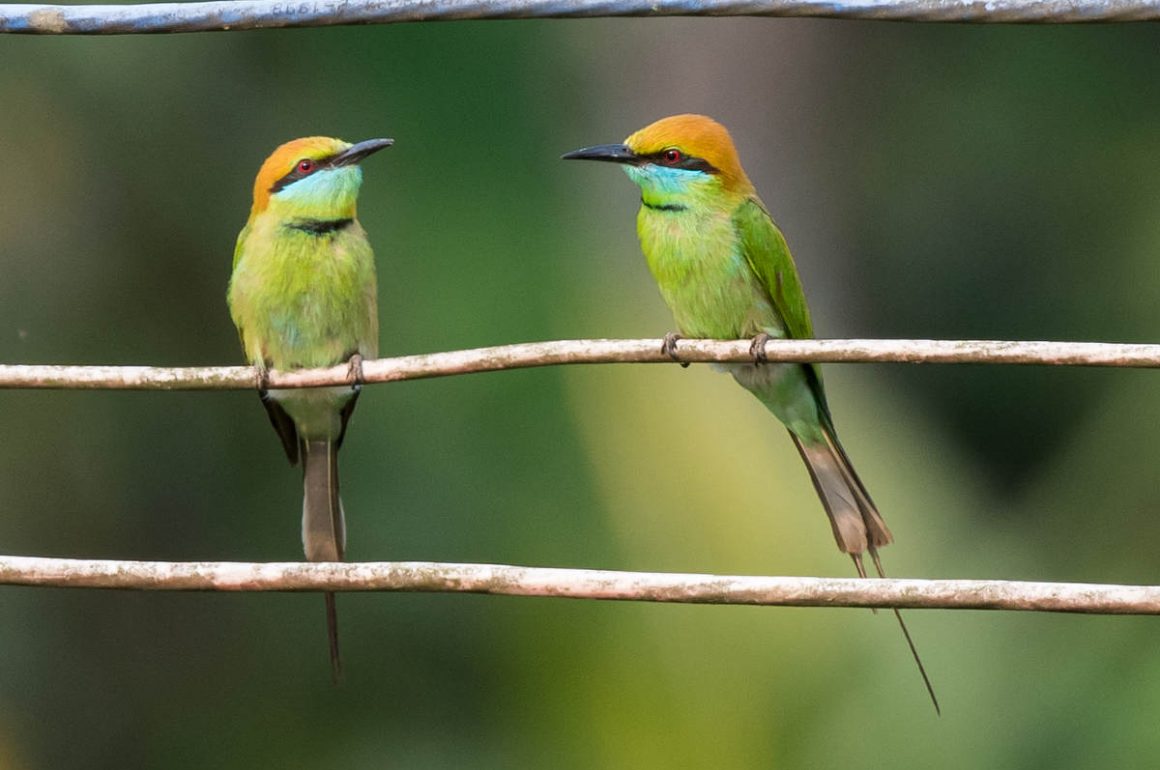
Look up Nabang on a map of China – it is literally at the end of a road. As usual, birds seem to like these off-the-way places best – eBird lists 337 species based on a little more than just 100 checklists. It is also one of these places where the local police seem to be allowed to make up their own rules – which may lead to restrictions for foreigners. Going with a Chinese friend or guide is thus recommended.
While the HBW describes the bulbul family as “often rather plain”, I find them usually quite attractive, though in an understated way that may not appeal to the flashiness-seeking HBW authors. A few examples: the Ashy Bulbul …
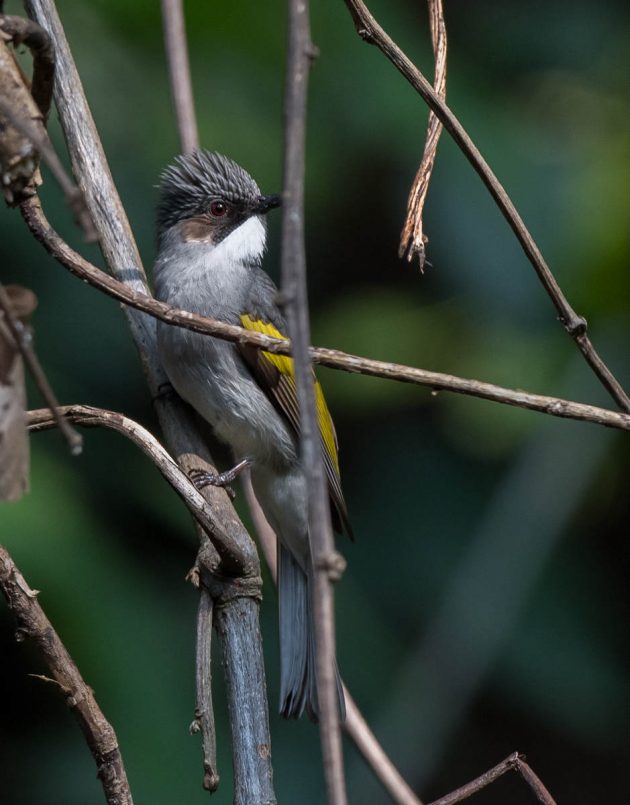
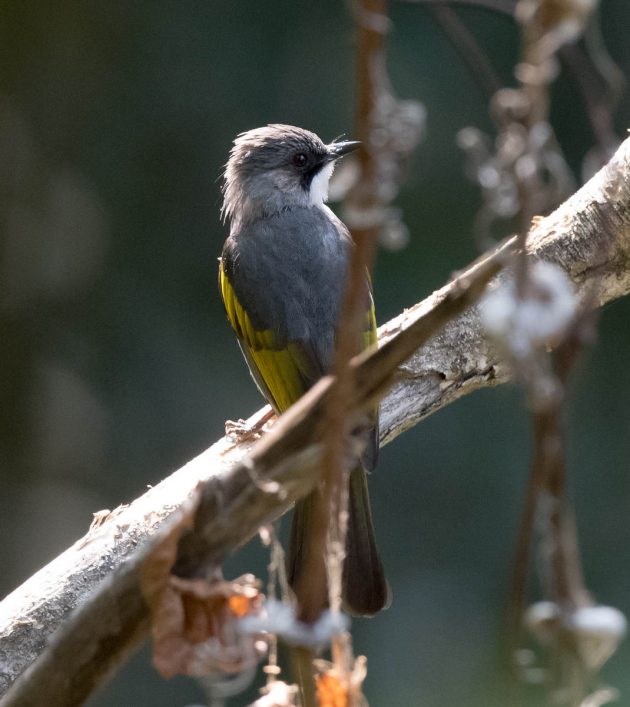
… Black Bulbul …
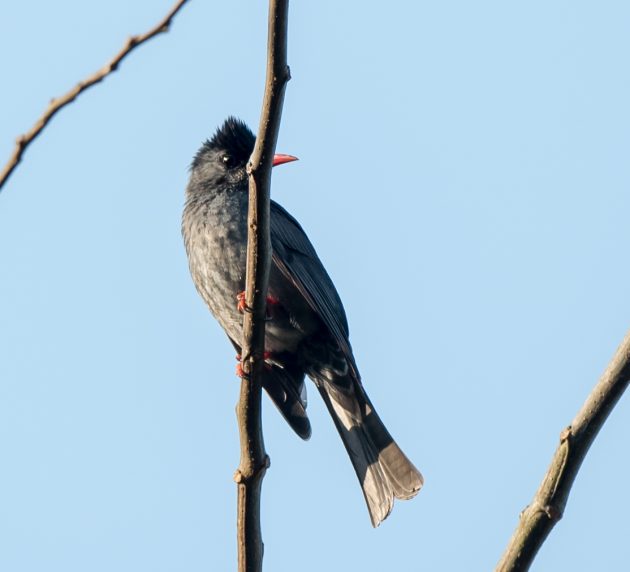
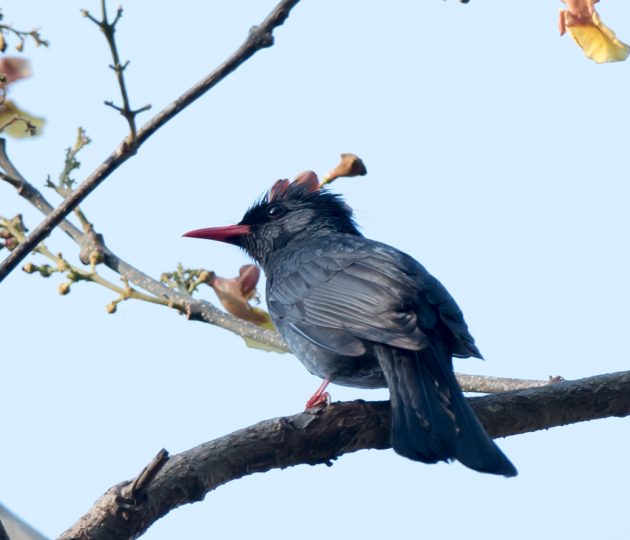
… and the Grey-eyed Bubul.
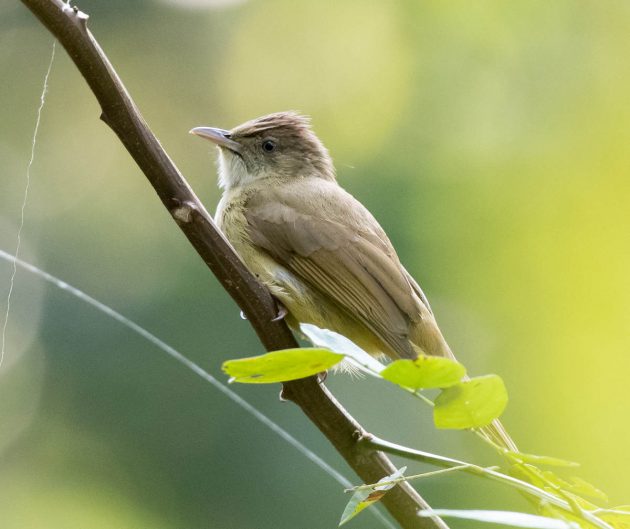

One very annoying aspect of the HBW is that in their search box, they seem to require you to put in exactly the one species name they think is the only acceptable one. So if for example, you look for Asian Pied Starling, you get “No matches” even though this is the exact name used on several other bird pages and in many bird guides. Only by looking up the Latin name first you will find there is a HBW entry for the species titled Indian/Javan/Siamese Pied Myna.
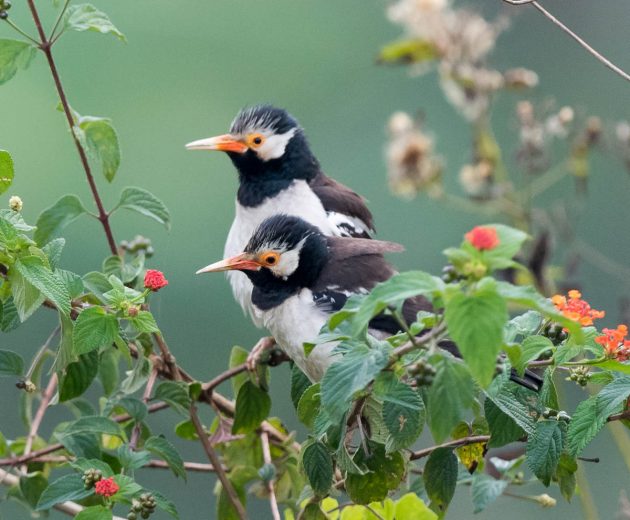
Actually, it turns out that (as hinted at by the clumsy HBW species name) this is not actually one but three species, one of which (Java) is probably already extinct in the wild (the depressing title of the study is “Newly described species is already extinct in the wild”).
Given the location, the ones shown in my photos should be the Indian Myna.
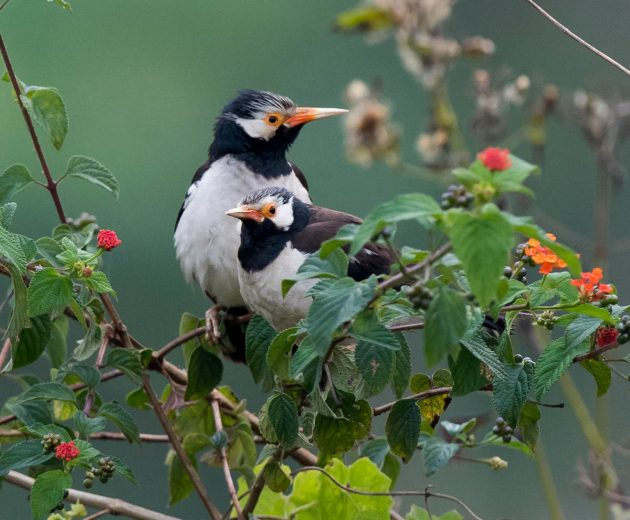
It is kind of hard to find a reason to include a great song about same-sex marriage in a blog on Nabang birds. I am paralyzed just thinking about how to do it. “Analysis Paralysis”, Jen Cloher. “Now the kangaroos are drinking from the pool” (Jen is from Australia).
The Vinous-breasted Starling sounds like a good topic for an ambitious Ph.D. student, as the HBW notes “its biology, including nesting ecology, is poorly known, with no dedicated studies, and most of the relatively scant published information is drawn from anecdotal observations”.
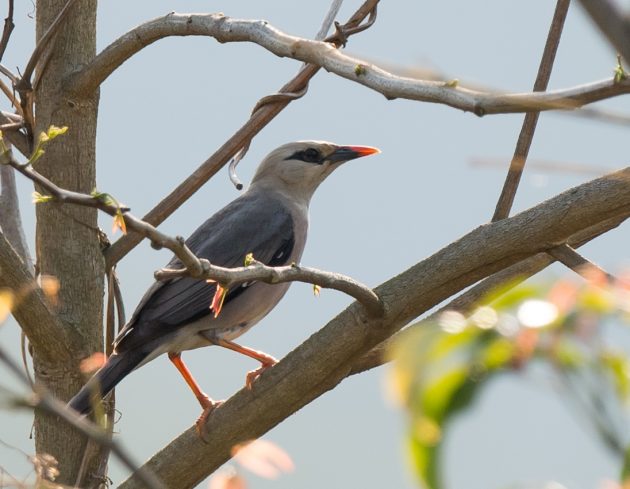
It looks quite attractive, too.
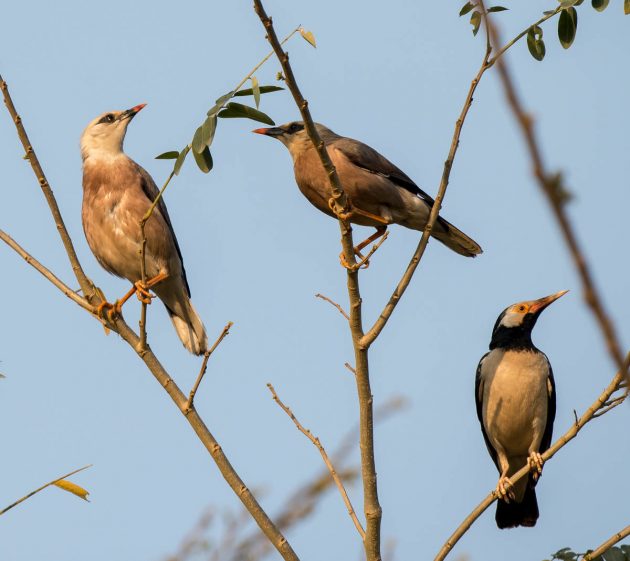
And spending some time in Nabang should be nice too, though probably not an option for foreigners (I once got told by the local police to leave the place, with the weird rationale that “the place is not safe for foreigners”).

The name Drongo comes from the language of Madagascar, where it is used for a local species – the word is now used to name a whole bird family. Interestingly, in Australian slang “drongo” also means an incompetent or stupid person, which is apparently derived from the name of an Australian racehorse of the 1920s which consistently finished last or near last (source). Australian readers, can you confirm or dispute?
The Black Drongo is a very common member of the family. In one study, the bird used electric power lines as a perch in 63% of all hunts, which makes me wonder how the bird survived before there were power lines.
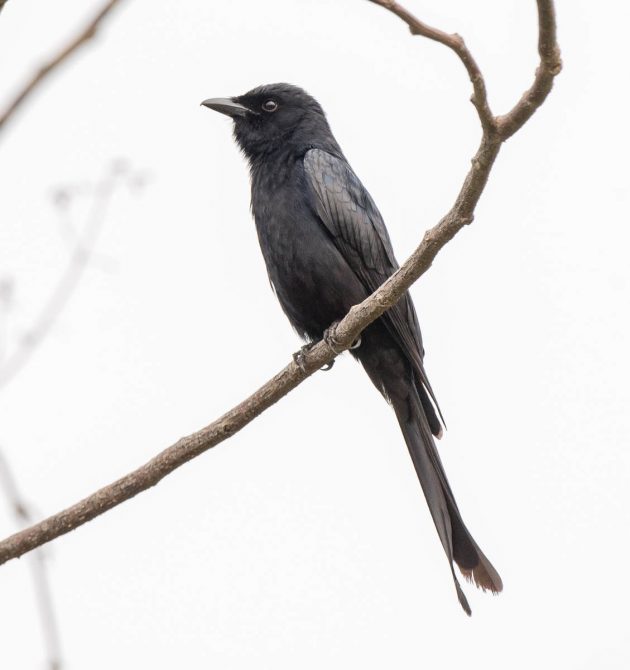
This Lesser Racket Tailed Drongo is a gambling addict and unfortunately lost one of its rackets after putting too much money on a racehorse named Drongo. It thought the name sounded lucky.
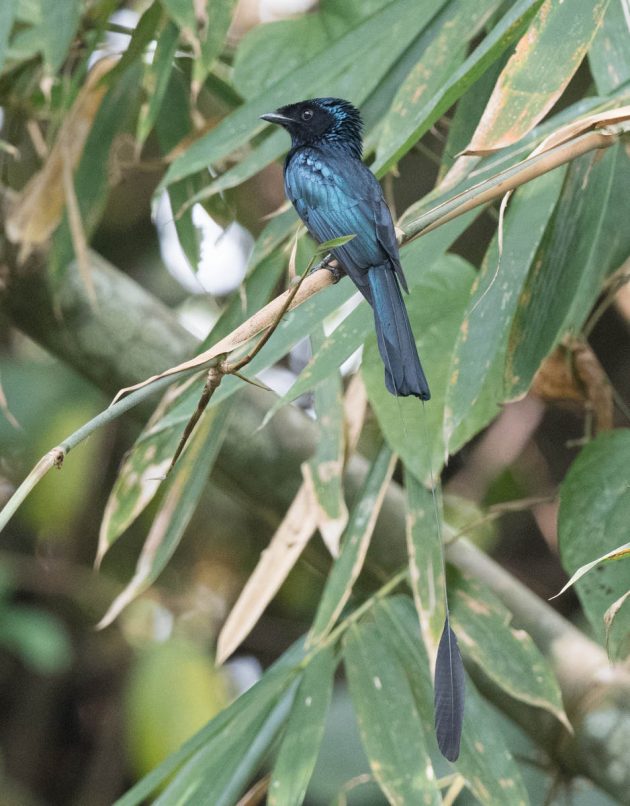
The Bronzed Drongo must be a bit of a romantic at heart – the HBW reports it as “singing on moonlit nights in Thailand”.

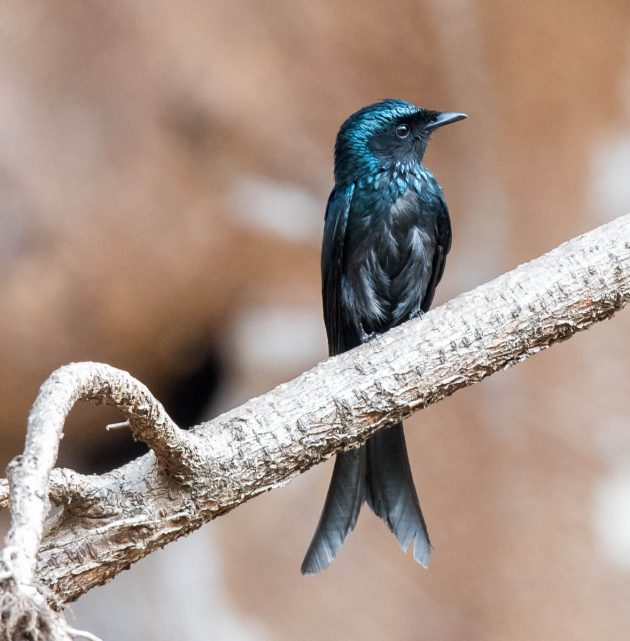
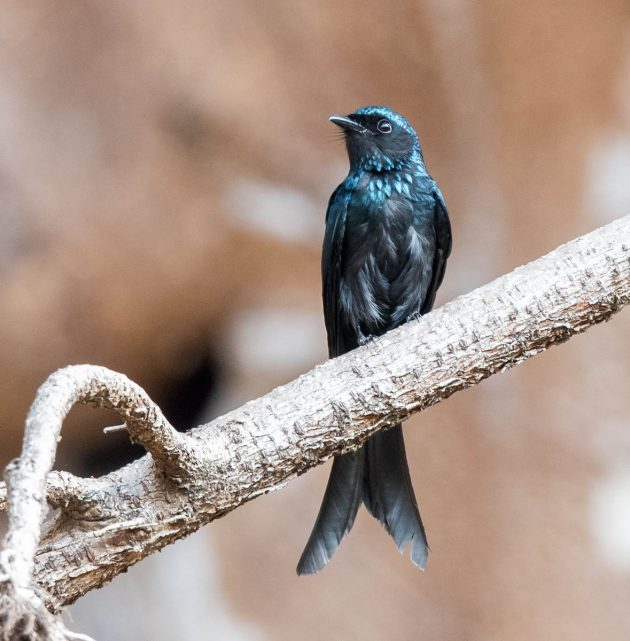
In this post, the Blue bearded Bee-eater only has a cameo role …
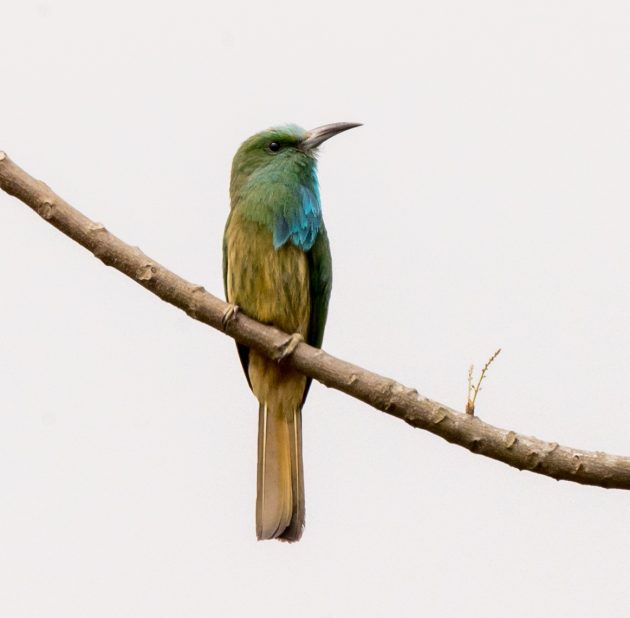
… as the activities of a pair of Green Bee-eaters were much more photogenic.
Looking at some clouds together.
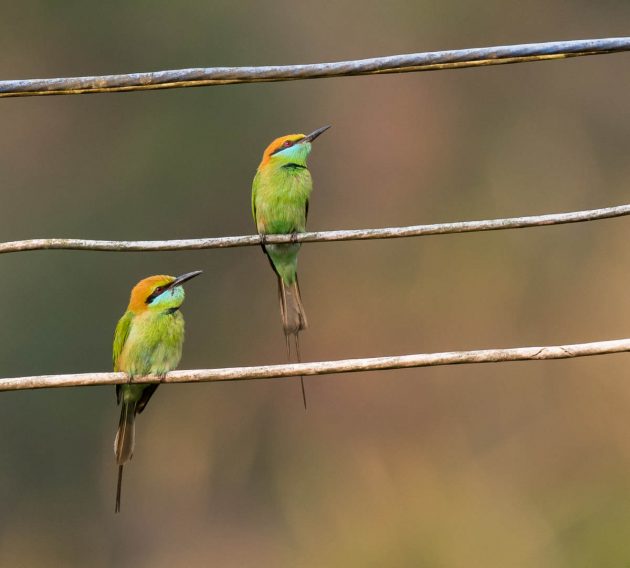
Talking about the latest book releases.
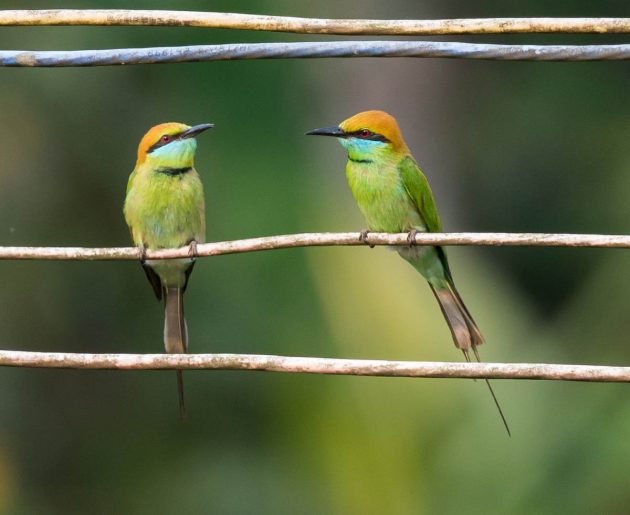
Courtship feeding
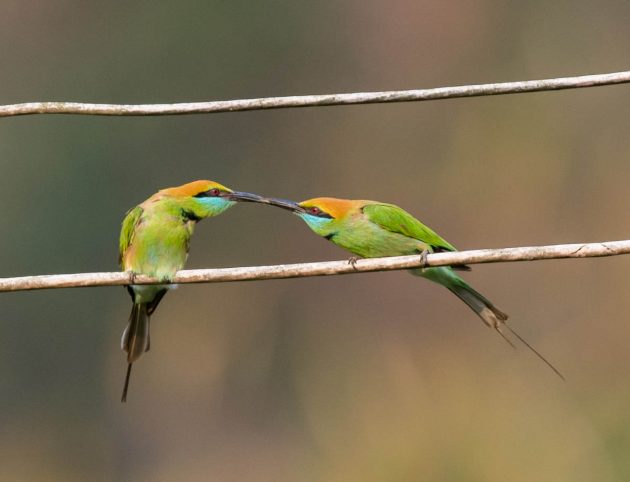
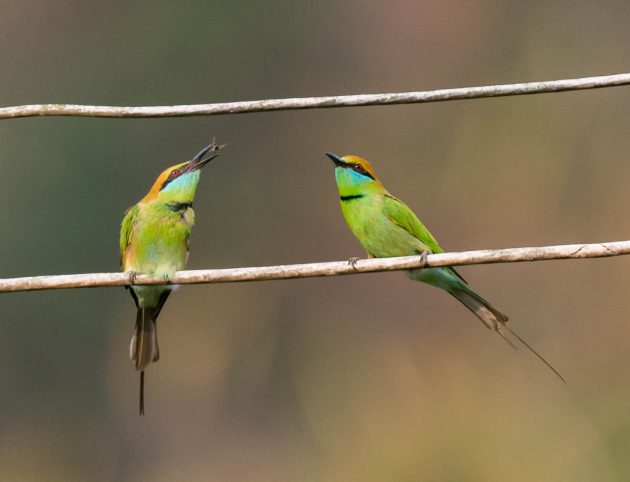
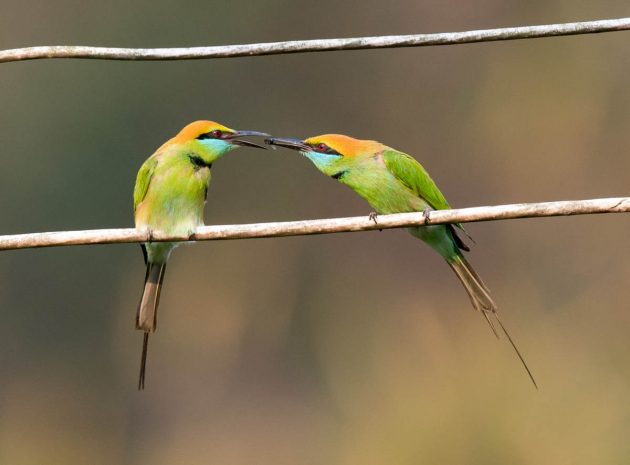
Listening to a James cover version together (The Pains of Being Pure at Heart, “Laid”).
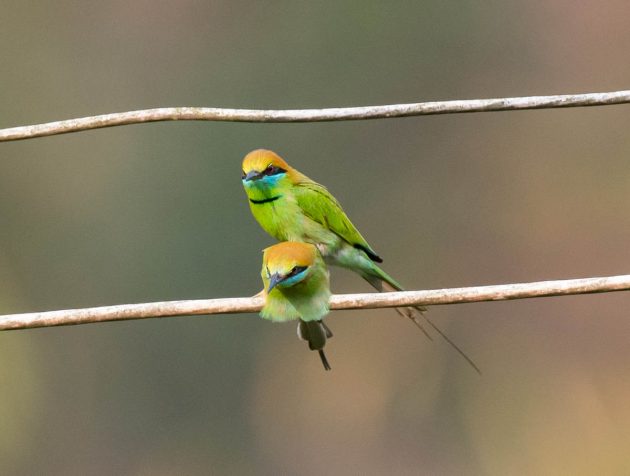
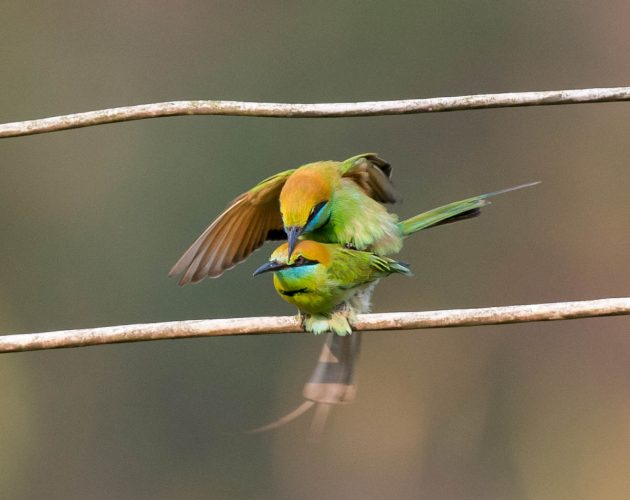
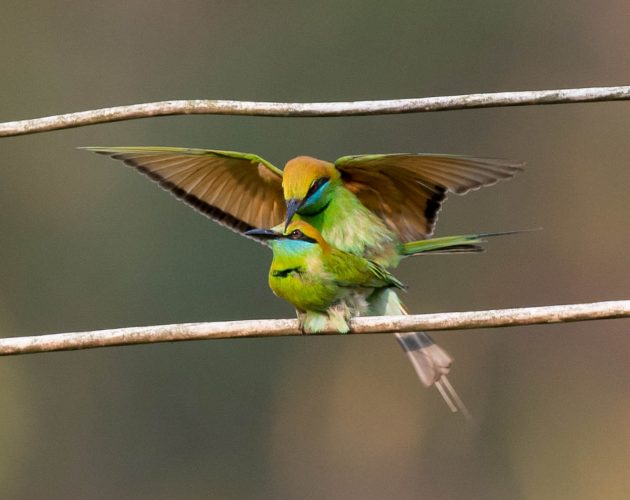
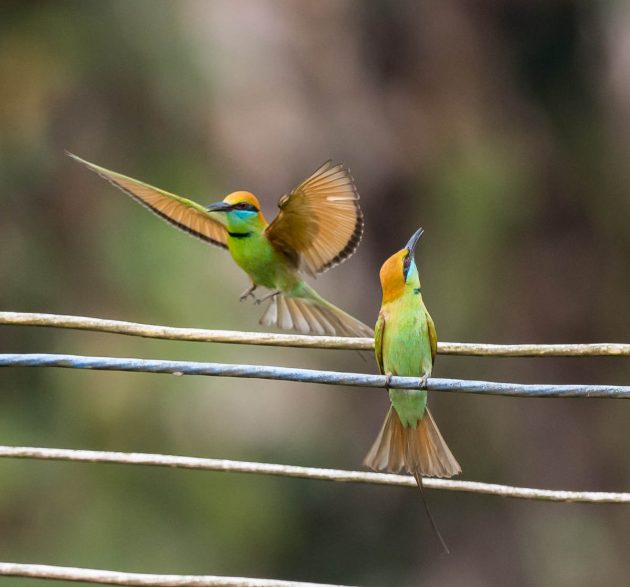
Apparently, the Burmese Shrike reminded the person who gave it its Latin species name colluroides of the Red-backed Shrike found in Europe (that one is Lanius collurio, and the –oides in the name of the Burmese Shrike is greek for “resembling”, as for example in the word “humanoid”).
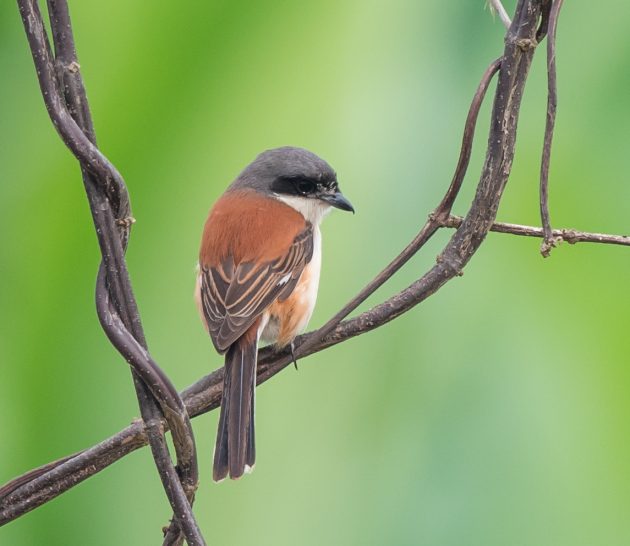
I am sure you were not wondering about this, but the word “paranoid” does not mean something resembling a “paran” (whatever that might be) – it is made up of the two Greek words “para” (irregular) and “noos” (mind). Come to 10,000 Birds, where all your unasked questions are answered.
Not just me but also eBird calls the Long-tailed Broadbill “a gaudy, cartoonish-looking bird”.
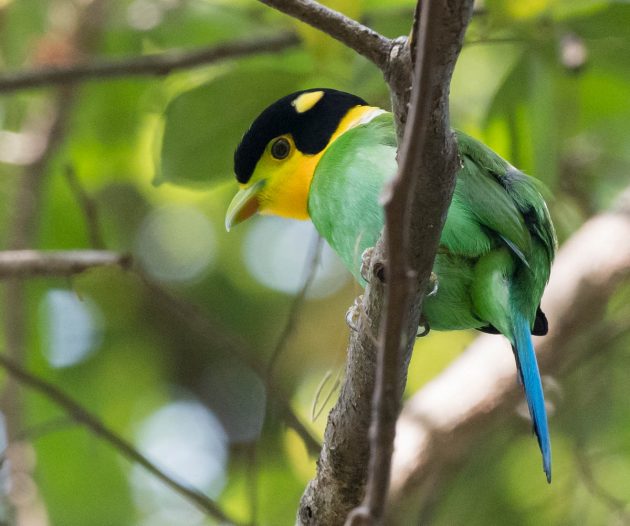
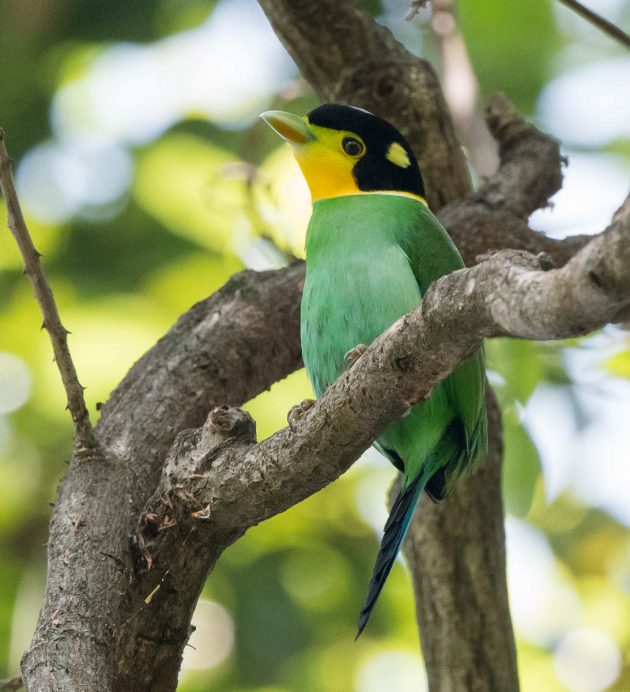
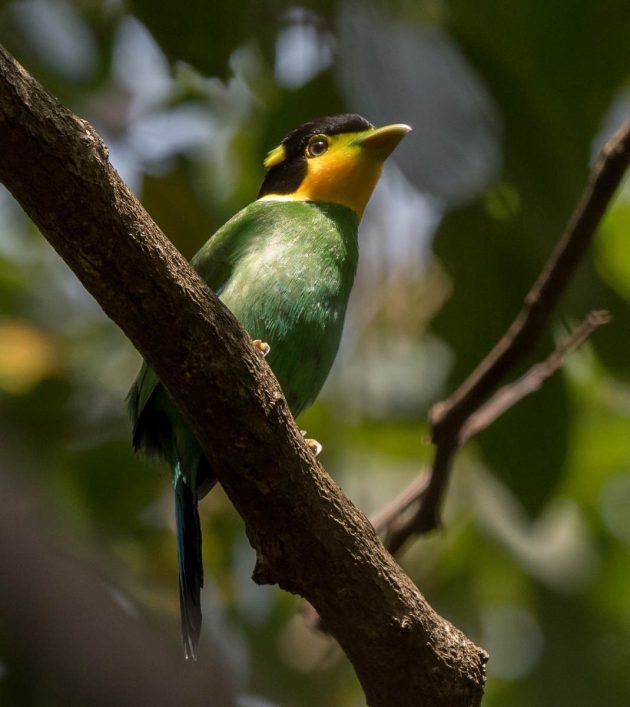
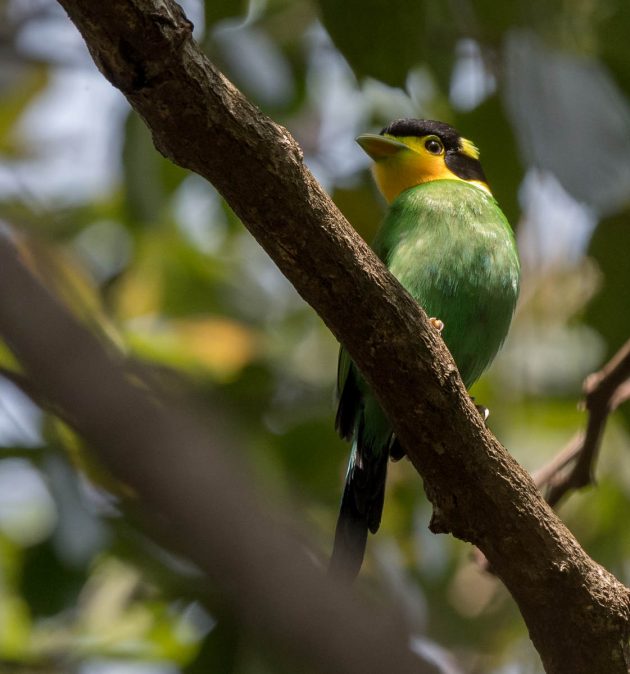
Long-tailed broadbills in Nonggang mainly build their nests on power lines (88.5%, source), which again makes me wonder how the bird survived before there were power lines.
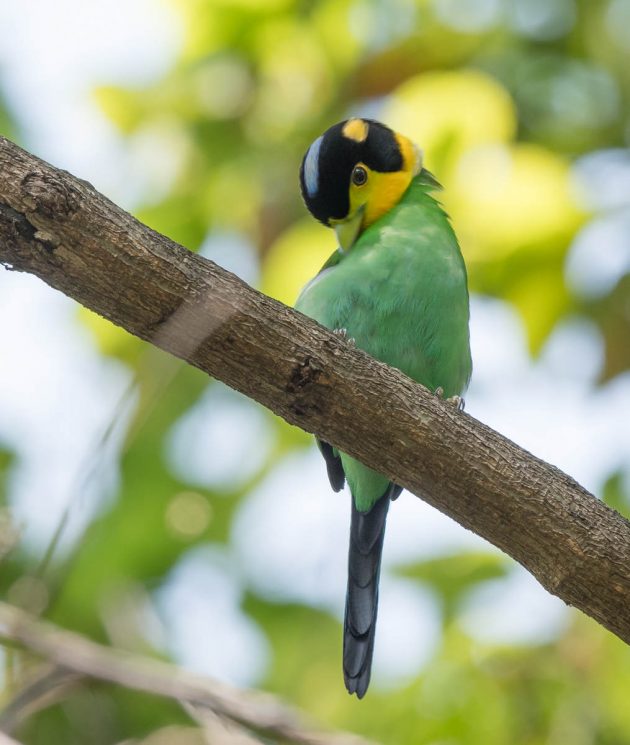
Long-tailed Broadbill photo in the ready-to-use bookmark version:
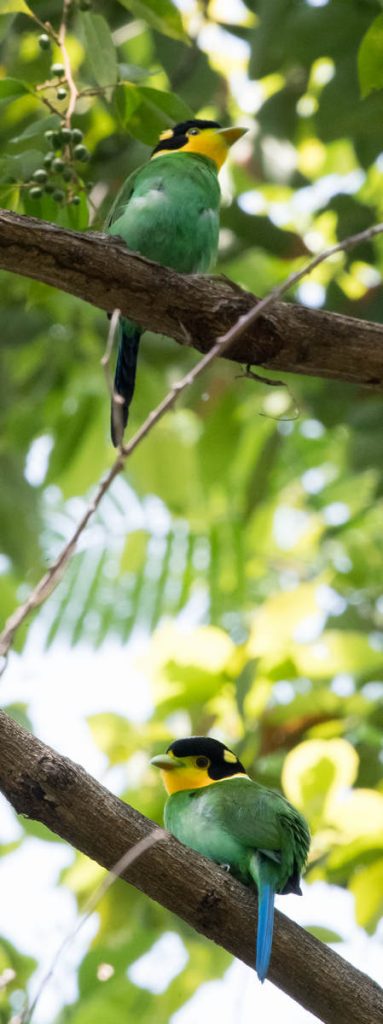
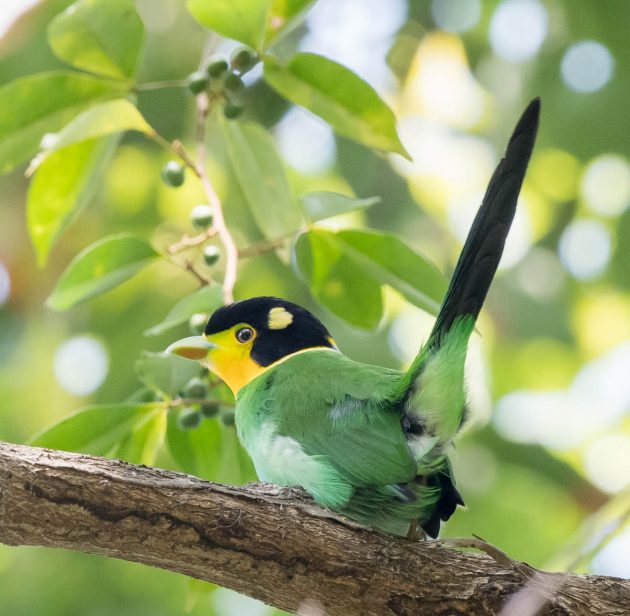
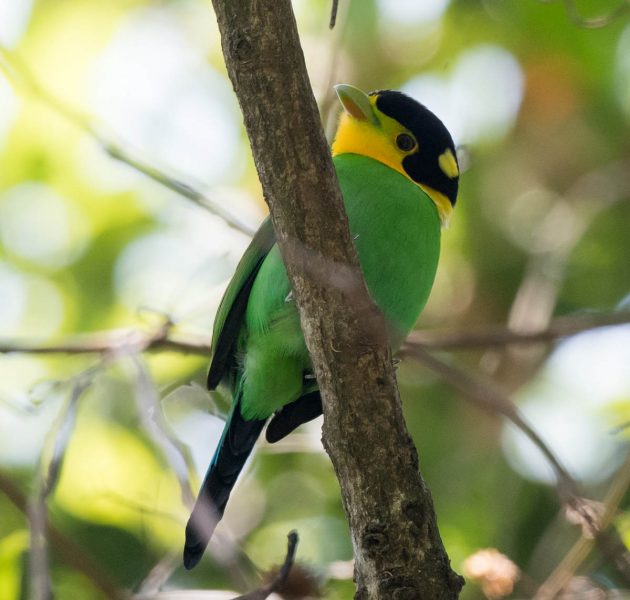
For other examples of cartoon birds, see here.
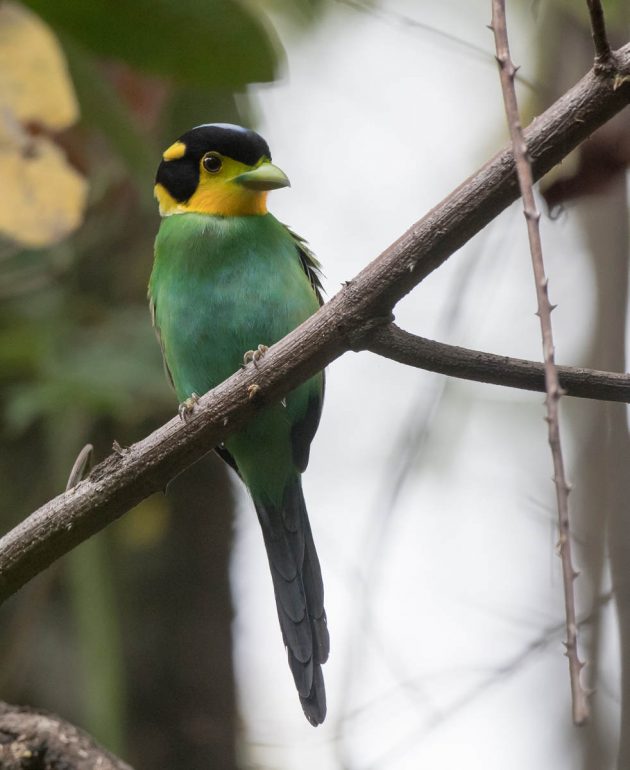
Have you ever started writing a paper by just copying an older one and then gradually changing it? I certainly have.
So have Vinaya Kumar Sethi and Dinesh Bhatt. One of their papers, “Provisioning of young by the Oriental Magpie-robin” starts with the following sentence:
“Information on provisioning behavior of birds in the Indian subcontinent is almost negligible”.
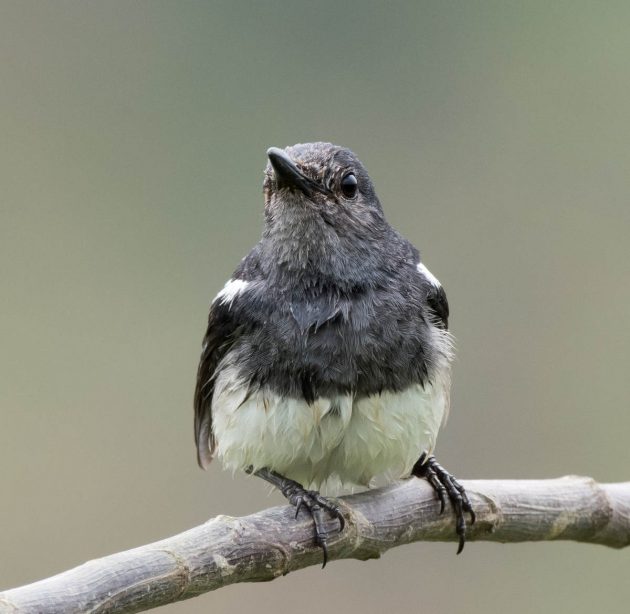
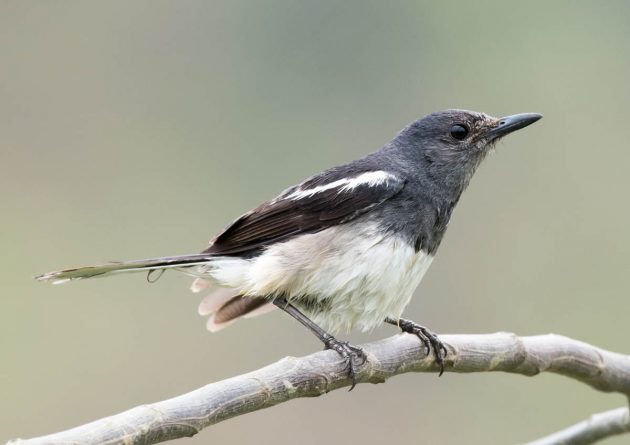
Then, faced with the challenge of coming up with a first sentence for the paper “Nesting success of the Oriental Magpie-robin in nest boxes and tree cavities”, they write
“Information on the nesting success of birds in the Indian subcontinent is almost negligible”.
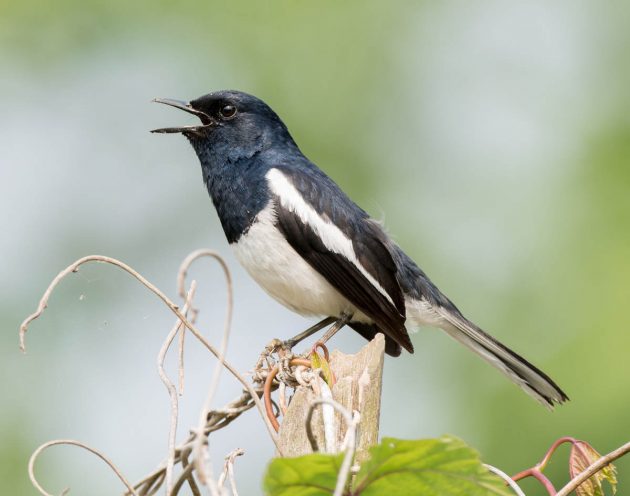
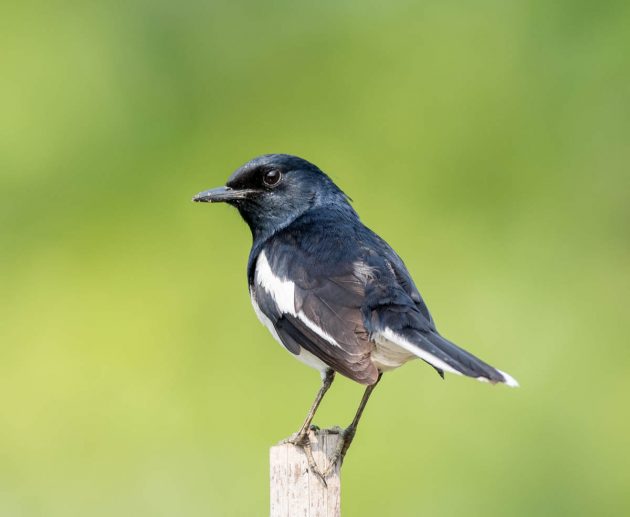
The Latin name of the Pale-headed Woodpecker, granti, is probably derived from a person named Grant, but nobody seems to know which Grant that is (at least the HBW does not know). It seems as if the bird already had this name around 1845, by which time Ulysses S. Grant had just about graduated from West Point and was still a long way away from being a US president, so it must have been another Grant.
Upon seeing the species, the first impulse of the eBird writer seems to have been to call a doctor – the species is described as an “odd-looking woodpecker with a … sickly-looking pale head”.
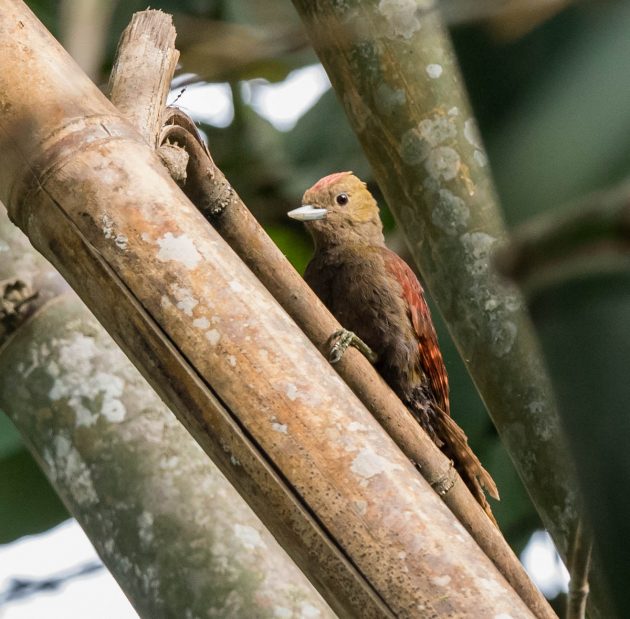
“Are you ok, Mr. Woodpecker? Should I call an ambulance?”
While eBird thinks that the Red-billed Scimitar Babbler has a “bright red bill”, the HBW goes for “bill orange to orange-red”. Probably wars have been fought about smaller disagreements, though I would be hard-pressed to give you an example now. Even though I usually side with eBird (they seem more human to me, see the woodpecker description above), in this case, the HBW description probably makes more sense.
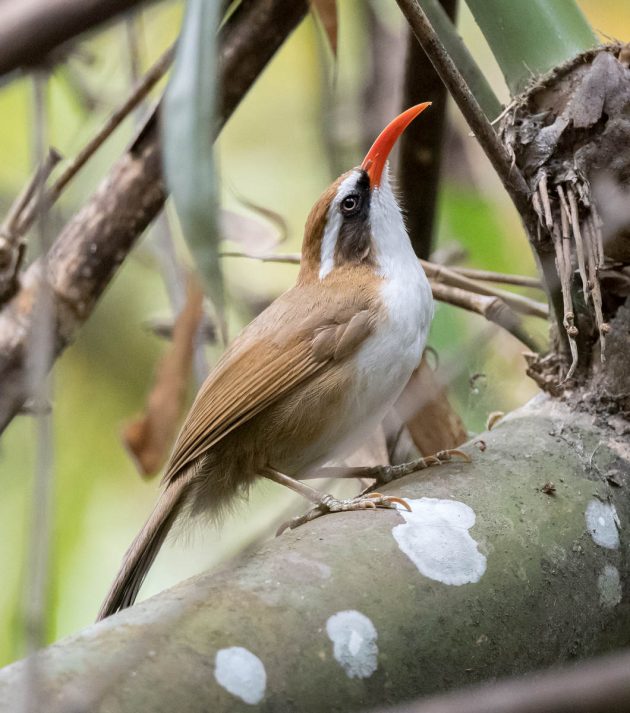
This rather kind Streak-breasted Scimitar Babbler invited me to join it for its meal – I had just eaten, so I politely declined.
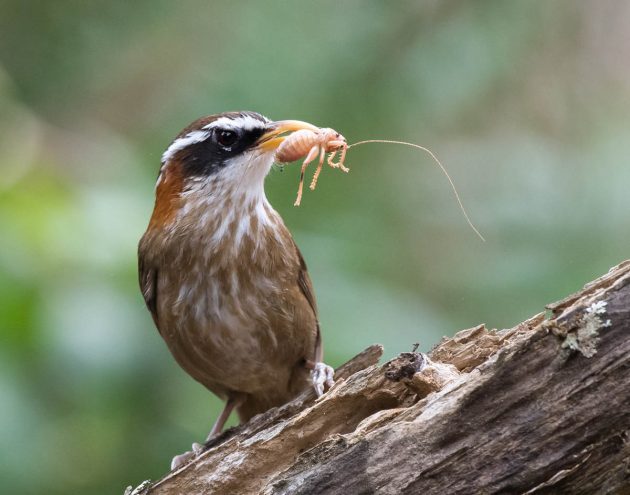
Compared to other pipits, Richard’s Pipit to me always looks a bit like it has richer parents and a slightly condescending attitude.
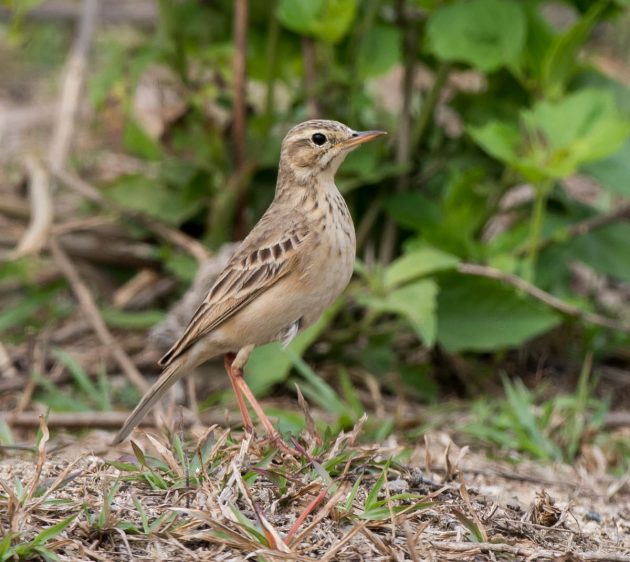
I guess in principle the “Richard” in the species name should be pronounced in a French way, as the bird is named after the French naturalist Charles Richard (1745–1835), director of postal services at Lunéville. Not sure whether anyone does that though.
According to Wikipedia, “Scarlet is a bright red color, sometimes with a slightly orange tinge … it is one-quarter of the way between red and orange.” This seems to apply nicely to the male Scarlet Minivet.
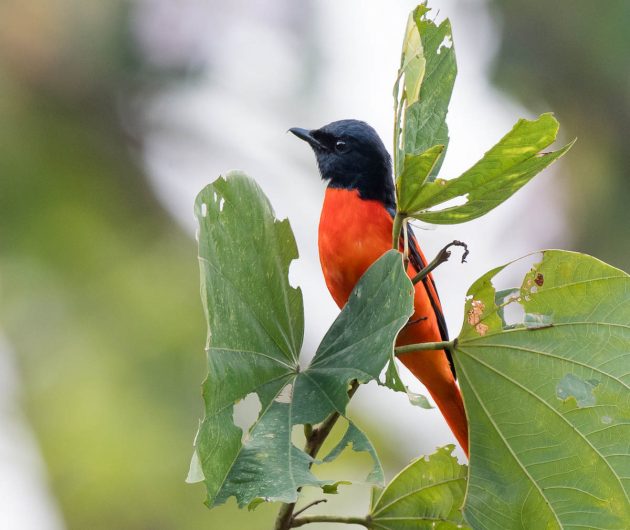
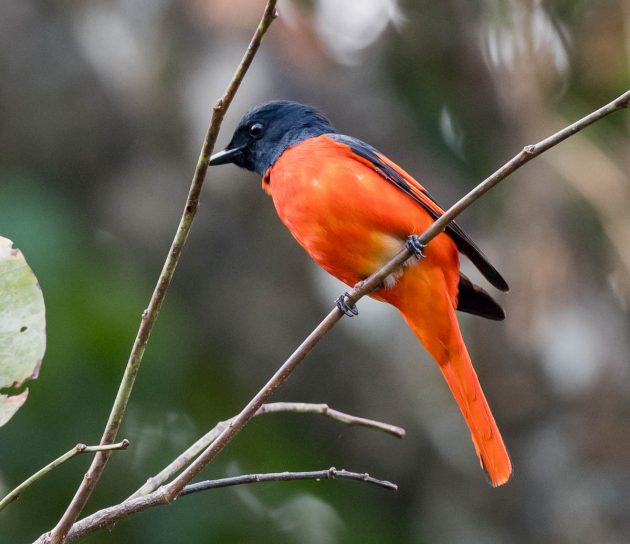
The female is a different story.
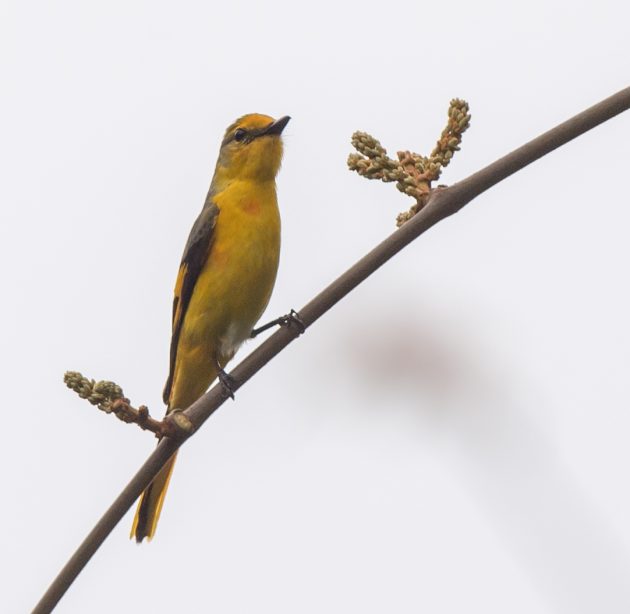
If – like me – you think that this Striated Yuhina looks cute and attractive, I am afraid that the HBW disagrees with you – they call the species a “small, dull yuhina”. Maybe they would be better off watching TV than watching birds.
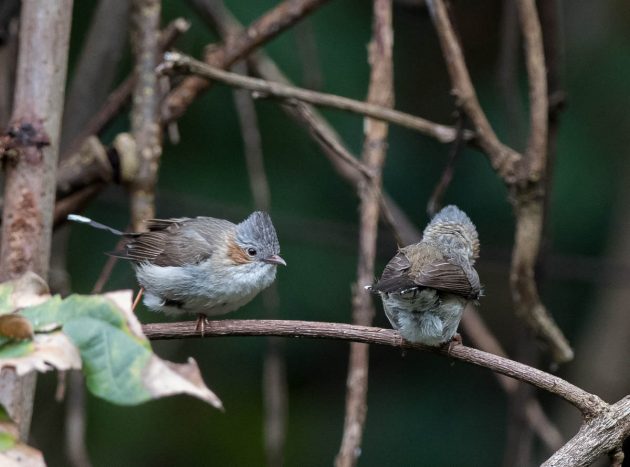
What you see in the photo is the grey-headed subspecies – a Latin speaker would probably be a bit puzzled by this as the Latin species name is castaniceps, “chestnut-headed”. No points for guessing what the head color of the nominate subspecies is.
Presumably, this is a female White-browed Piculet, as it lacks the male’s “bright yellow patch on the forehead” (eBird).
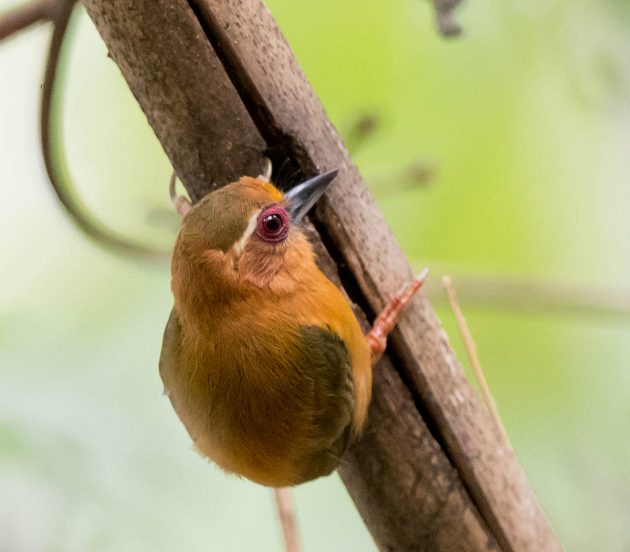
Somewhat surprisingly (at least to me), one paper describes the White-browed Piculet as a disturbance-tolerant species. I mention this mainly to be able to give you the title of the website headline: “Damning Evidence of Dam’s Impacts on Rainforest Birds”. Compared to that, some of my wordplay is not as bad as you thought.
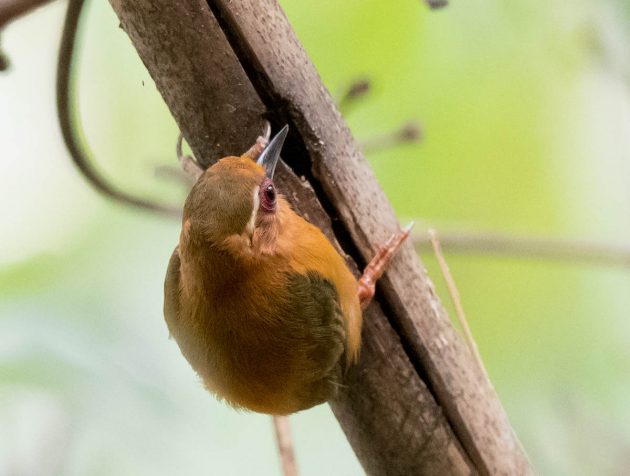













Leave a Comment